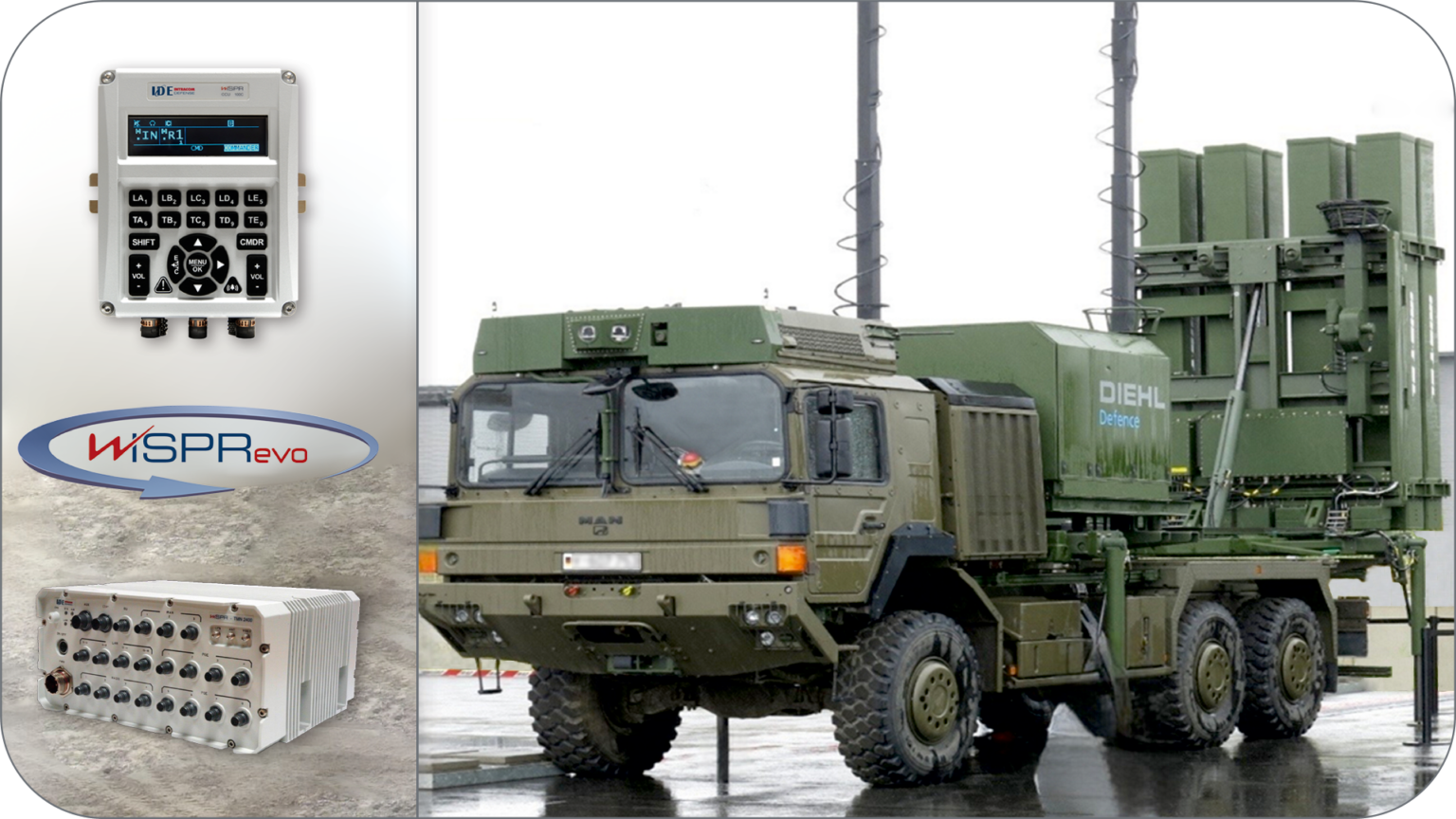INTRACOM DEFENSE (IDE) announces a new area of co-operation with DIEHL DEFENCE, with the decision for the deployment of IDE’s WiSPR evolution as the main voice and data Tactical Communication and Information System in DIEHL’s IRIS-T (InfraRed Imaging System Tail/Thrust Vector-Controlled) GBAD (Ground Based Air Defense) units. This initial contract comes as another acknowledgement of IDE’s persistence and continuous investment in the engineering design, development and manufacturing of advanced technology systems for the most demanding tactical communication environments.
This decision was preceded by extensive evaluation by DIEHL, which proved the operational capabilities of WiSPRevo to fulfil the demanding requirements of IRIS-T GBAD for critical voice and data communication schemes, given the System’s robustness and adaptability, along with the flexibility to satisfy IP information exchange. These WiSPRevo attributes, together with its ease of integration and seamless interoperability with 3rd party systems, establish an effective solution, being the System of choice to support tactical communications for DIEHL’s IRIS-T GBAD deployments.
The IRIS-T is a medium range infrared homing air-to-air missile available in both air-to-air and ground defence surface-to-air variants. It also is called AIM-2000. The missile was developed in the late 1990s–early 2000s by a German-led program to develop a short to medium range infrared homing air-to-air missile to replace the AIM-9 Sidewinder in use by some NATO member countries at the time. A goal of the program was for any aircraft capable of firing the Sidewinder to also be capable of launching the IRIS-T. Surface-to-air defence systems variants came later, with the short-range IRIS-T SLS fielded in 2015, and the medium-range IRIS-T SLM fielded in 2022.
As a part of the NATO MEADS program, the German Air Force and others are now using a surface-launched (SL) radar-guided version of the missile, called IRIS-T SL. By 2022, two variants were available: IRIS-T SLS (short-range) with 12 km range and altitude and IRIS-T SLM (medium range) with 40 km range and 20 km maximum altitude. A third variant, IRIS-T SLX (long range) variant with a dual-mode (IR and RF) seeker, a range of 80 km and a maximum altitude of 30 km, is in development as of April 2022. Operational testing of the IRIS-T SLM was completed in January 2022.















